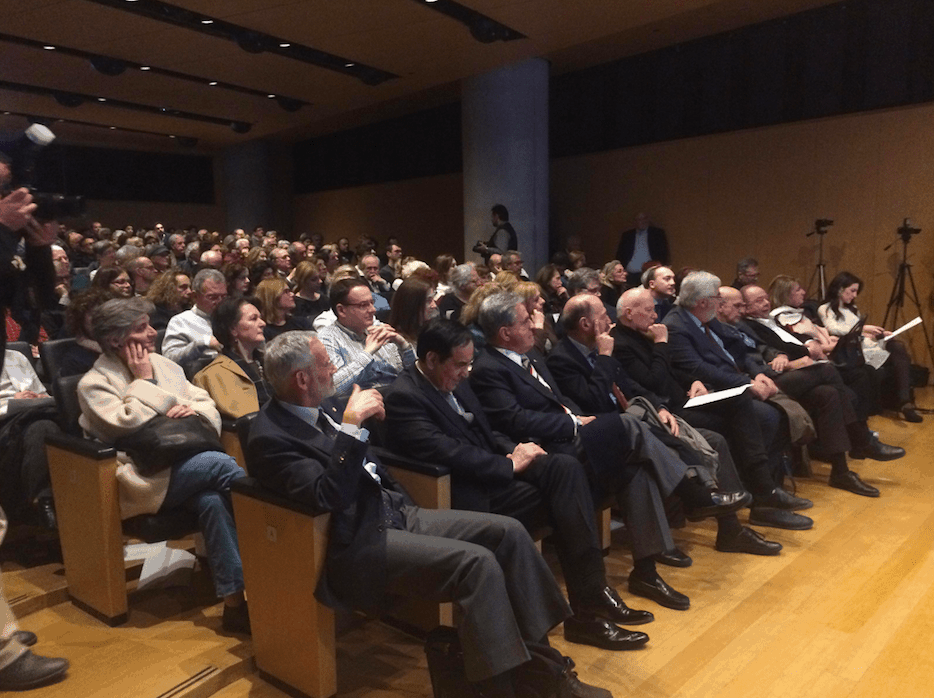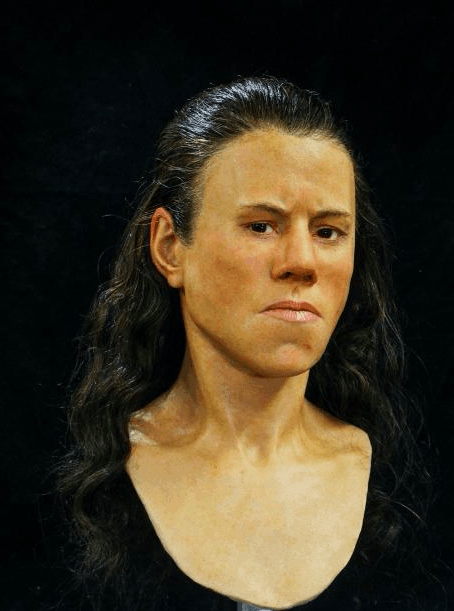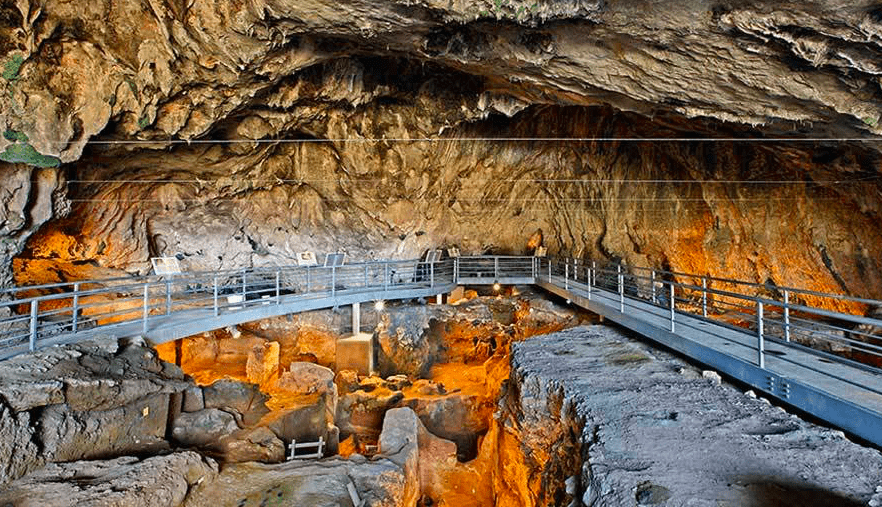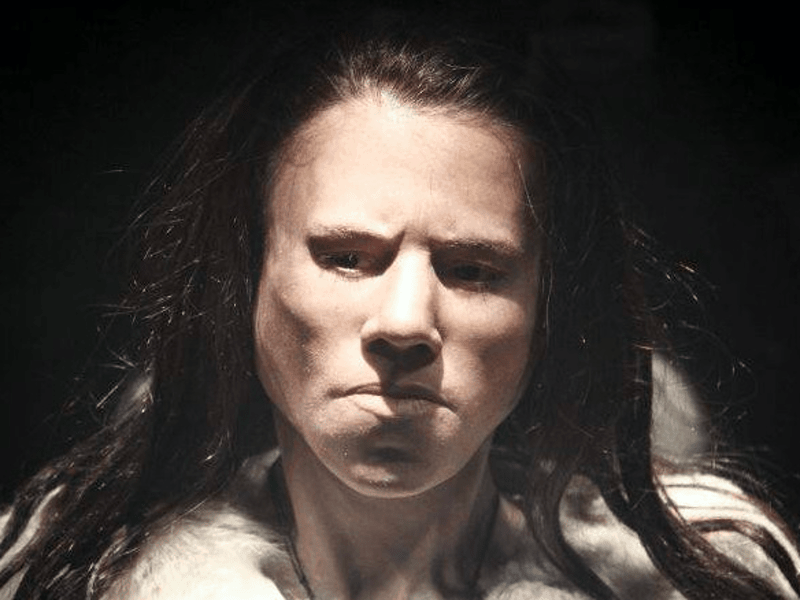A girl who lived in Greece 7,000 BC and was unearthed by archaeologists in Trikala, has had her face reconstructed. The unveiling took place at the Acropolis Museum on Friday, January 19, 2017, and GCT's Senior Journalist Aggelos Skordas was there for the unveiling.


By Aggelos Skordas
Avgi, a young girl aged 9,000 years old, among the first inhabitants of what is today known as Greece, was introduced for the first time to Athenians on Friday, in the Museum of Acropolis. Avgi (or “Dawn”) lived at the end of the Mesolithic Period, around 7000 BC, and called home the Cave of Theopetra in Thessaly, Central Greece, where she was buried after her precocious death aged between 18 and 25. Her remains were brought to light by chief archaeologist Nina Kyparissi – Apostolika of the Ephorate for Paleoanthropology and Speleology. Theopetra is the first cave to have been excavated in Thessaly and the only one to date with Mesolithic deposits. The remains of the girl, named by Orthodontist Prof. Manolis Papagrigorakis after the dawn of civilization in Greece, were recovered in 1993, while the reconstruction of her features involved an international team including the Swedish laboratory of archaeologist and sculptor Oscar Nilsson, specialising in reconstructions.

Her “unveiling” came at the conclusion of the 13-lectures seminar “Dawn at the Dawn of Civilization” held in the Acropolis Museum, during which a series of renowned scientists and artists delivered their knowledge on the prehistoric world of Avgi based on facts from the fields of archeology, art history, architecture, economics, law, psychology and astronomy, as well as gastronomy, clothing and aesthetics. Avgi is the second creation of Orthodontist and Assistant Professor of the National and Kapodistrian University of Athens Manolis Papagrigorakis: In 2010 he and his team reconstructed the face of Myrtis, an 11-year-old girl who lived and died of typhoid fever in Athens during the so-called “Golden Age of Pericles” in the 5th century BC. Some 2,500 years after her death, in 2010, Myrtis was named a United Nations “Millennium Friend”, supporting the organization’s Millennium Development Goals (MDGs) by sending a message to the world about disease prevention, while her reconstructed face has been included in Australian coursebooks.

“My joy is great that today, along with my friends and colleagues, we are presenting the second reconstructed ancient person”, Papagrigorakis said at the opening of the conference, announcing delightful news: “It seems that the Acropolis Museum generates beautiful messages: On the 15th of February, the Greek Post Office is issuing a postage stamp with the United Nations ‘Millennium Friend’, Myrtis. I wish the new ‘Daughter’, Avgi, to have the same fortune”, he added while calling on the audience, who had literally overwhelmed the amphitheatre, to watch the “journey” of quest and research as presented by the speakers.
As explained, “Avgi had a height of 1.57 m. while the anthropological examination brought up evidence of mild alterations of inflammation, possible anemia or scurvy, as well as suspicions of an endocrine or metabolic problem. She also had remarkable prognathism, while dietary studies suggest food consumption from an inland environment rather than a marine one”. Despite the fact that her bones appeared to belong to a 15-year-old-girl, her teeth indicated she was no less than 18, Papagrigorakis clarified. Endocrinologists, orthopedists, neurologists, pathologists, and radiologists had to work together in order to produce an accurate image of the prehistoric girl.

“Distant times are not easily at the centre of interest, thus we are facing big gaps. There, you have found a key place of activity and with your scientific ability, you have managed a small ‘miracle’: ‘Resurrecting’ people, bringing them closer to us and providing us with a detailed representation of data as it has never been achieved before”, Deputy Rector of Academic Affairs and International Relations of the National and Kapodistrian University of Athens, Prof. Konstantinos Bourazelis underlined addressing Papagrigorakis. “In the case of Myrtis and Avigi, we have a pioneering and uncommon flawless collaboration of science and art”, Prof. Angelos Kotios, Rector of the University of Piraeus, added during his own address.
On her behalf, archaeologist Nina Kyparissi – Apostolika provided the audience with valuable information and a thorough insight into the Cave of Theopetra, the burial of the young girl as well as of the period she lived, the Mesolithic, between 9000 and 6700 BC. “Her name accurately attributes the dawn of today’s civilization”, she characteristically pointed out. Until 1993 “little has been found in Greece and specifically Thessaly from the Mesolithic Period”, Kyparissi – Apostolika explained adding that Avgi’s well-preserved skull led to her facial reconstruction that can now be used for teaching purposes.



Interesting! How does her DNA compare to the other girl? To modern people? She appears a bit more white than modern greeks and the first girl reconstructed? Did they even get DNA? Was there a cause of death? How did she get preserved so long?